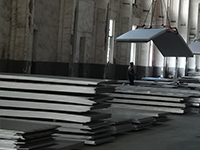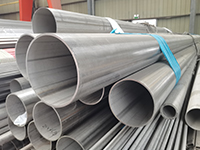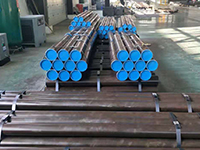Surface quality inspection and treatment method of 304 stainless steel plate
source:TuoGuanview:
The surface quality of 304 stainless steel plate is mainly determined by the pickling process after heat treatment. If the surface oxide scale formed by the previous heat treatment process is thick or the structure is uneven, pickling will not improve the surface finish and uniformity. Therefore, we must pay full attention to the heating of the heat treatment or the surface cleaning before the heat treatment.
If the thickness of the surface oxide scale of the stainless steel plate is uneven, the surface finish of the base metal under the thick and thin areas is also different, and the dissolution of the surface oxide scale during pickling and the degree of corrosion of the base metal at the attachment site of the oxide scale by acid Different, so the surface of the steel plate is not uniform. Therefore, during the heat treatment heating, it is necessary to uniformly form oxide scales. To meet this requirement, we must pay attention to the following issues:
If oil is attached to the surface of the stainless steel plate during heating, the thickness of the oxide scale at the oil-attached part will be different from the thickness and composition of the oxide scale on other parts, and carburization will occur. The carburized part of the base metal under the oxide skin will be severely corroded by acid. The oil droplets sprayed by the heavy oil burner during the initial combustion will have a great influence if it adheres to the workpiece. The fingerprint of the operator may also be affected when it is attached to the workpiece. Therefore, do not touch the stainless steel parts directly with your hands, and do not make the work pieces stained with new oil. Must wear clean gloves to operate.
If there is lubricating oil attached to the surface of 304 stainless steel plate during cold working, it must be fully degreased in trichloroethylene degreasing agent and caustic soda solution, then cleaned with warm water, and then heat treated.
If there are debris on the surface of the stainless steel plate, especially when organic matter or ash adheres to the workpiece, heating will certainly affect the oxide scale.









